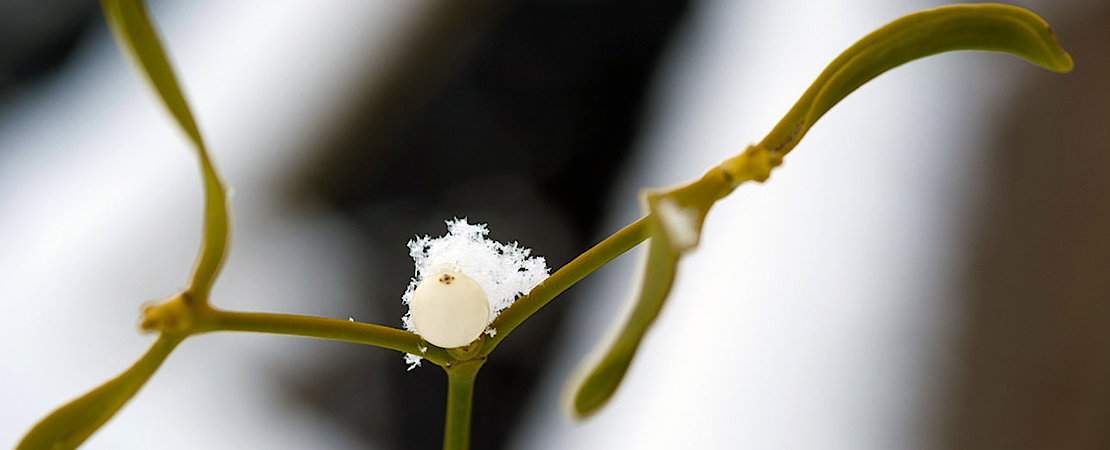Mistletoe therapy for bladder cancer
- Mistletoe plant extract in patients with non-muscle-invasive bladder cancer – results from a phase Ib/IIa single-group dose escalation study
- Intravesical mistletoe plant extract in patients with non-muscle-invasive bladder cancer – current status of a phase III efficacy study
- High-dose Viscum album extract treatment in the prevention of recurrent bladder cancer – a retrospective case serie
Mistletoe plant extract in patients with non-muscle-invasive bladder cancer – results from a phase Ib/IIa single-group dose escalation study
Eisenbraun 2016 [149]
Patients and methods
In this study, the maximum tolerable dosage as well as the safety and efficacy of intravesical instillations of a mistletoe extract in patients with non-muscle-invasive bladder cancer were investigated. Four weeks after transurethral resection, patients in this single-arm dose-escalation study were treated with weekly instillations of the mistletoe extract abnobaVISCUM Fraxini over a period of six weeks.
During resection, a marker tumour was left in the bladder, which was removed 12 weeks after the begin of instillations – if it was still present - or the site of the previous marker tumour was biopsied to ensure that all patients were tumour-free at the beginning of follow-up. During the follow-up, a clinical check-up, a safety laboratory and a cystoscopy were performed every three months.
Results
A total of 36 patients were treated with increasing doses of the mistletoe extract. No dose-limiting toxicity was found up to a dose of 675 mg plant extract.
In addition to local reactions there were also signs of fever. All side effects were well controllable. No serious side effect was found to be causally related to the treatment.
After twelve weeks, a remission rate of the marker tumour of 55.6 percent (95 % AI: 38.1-72.1) was achieved. The recurrence rate observed after one year was 26.3 percent (95 % AI: 9.1-51.2) and is thus in the range of patients with a comparable risk according to the EAU guideline (European Association of Urology).
Conclusion
This study showed that intravesical instillation of a mistletoe extract is safe and well tolerated by patients with non-muscle-invasive bladder cancer. These promising efficacy data are currently being further investigated in a phase III study.
Intravesical mistletoe plant extract in patients with non-muscle-invasive bladder cancer – current status of a phase III efficacy study
Eisenbraun 2016 [150]
Patients and methods
To determine the safety and efficacy of intravesical instillations of mistletoe extract after transurethral resection of non-muscle-invasive bladder cancer, this ongoing randomised, open, actively controlled, prospective, multinational, confirmatory phase III study compares the efficacy of intravesical instillations of abnobaVISCUM 900 and mitomycin C (MMC).
For this purpose, patients with completely resected, non-muscle-invasive bladder cancer of stage Ta with medium risk according to the EAU guideline (European Association of Urology) and an early instillation with MMC 40 mg are included and allocated 1:1 to the two treatment groups.
The study includes a 12-month treatment period and a 12-month follow-up. All patients will receive six instillations once a week (induction therapy) and a maintenance therapy until the end of the first year. Maintenance therapy consists of one instillation every six weeks in the mistletoe therapy arm and one 40 mg instillation every twelve weeks in the MMC arm for a total of 13 and 10 instillations respectively until the end of the first year.
Follow-up monitoring in the second year takes place every twelve weeks. The main target parameter is the time to tumour recurrence, secondary study objective is the safety of abnobaVISCUM 900 therapy compared to MMC monotherapy.
Results
The case number calculation resulted in a number of cases of 546 patients for stage I and II in both study arms. By 2016, 32 centres were recruited.
High-dose Viscum album extract treatment in the prevention of recurrent bladder cancer – a retrospective case series
von Schoen-Angerer et al. 2015 [151]
Patients and methods
The aim of this retrospective case series with 8 patients was to investigate the preventive effect of subcutaneous high-dose mistletoe therapy with Iscucin Salicis (strength H) on recurrences of bladder cancers.
Therefore, 7 patients with non-muscle-invasive bladder cancer and 1 patient with muscle-invasive bladder cancer who also received partly BCG and/or mitomycin C before high-dose mistletoe therapy were investigated. Four patients had frequent recurrences before treatment, and in all 8 patients there were a total of 28 recurrences (a median of 3.5 recurrences per patient).
Results
The median tumour-free observation period in the 8 patients was 48.5 months since the beginning of high-dose mistletoe therapy. 5 of 8 patients were recurrence-free for years, in 2 patients an evaluation was not possible, and in 1 patient the effect could not be reliably related to mistletoe therapy.
No tumour progression was observed. The treatment was generally well tolerated and no patient discontinued treatment because of side effects.
Conclusion
High-dose mistletoe therapy can prevent relapses in individual patients with recurrent bladder cancer. To verify these results, prospective studies are necessary to determine whether this treatment offers an additional, bladder-saving option for prevention in patients with non-muscle-invasive bladder cancer at medium to high risk.
